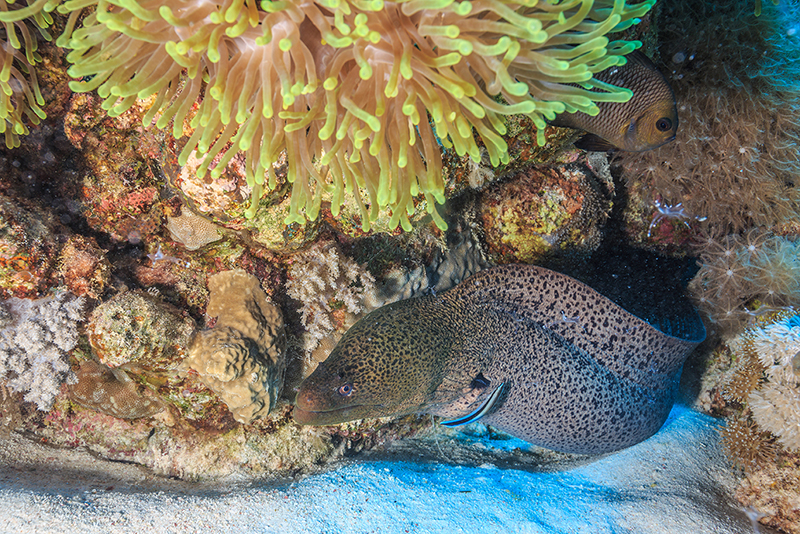It was 1980 when it was spotted in the waters of Israel, for the first time in the Mediterranean. And since then it has been a slow but progressive expansion towards the west, especially favored in recent years by the increase in sea temperatures, which is particularly affecting the Mediterranean.
A sea that has always hosted fish of the Murenidae family, of which the most widespread representative remains Muraena helena, a close relative of the alien Enchelycore anatina, the official name that identifies the Eastern Moray eel, also known as the “tiger moray eel”. A name, the latter, linked to the bright colors that characterize it, from yellow to orange, to brown, with streaks that can recall the coat of the large terrestrial feline.
From that first report, thirty years passed before we heard about the presence of the snake-like “tiger” in the upper Adriatic, in Croatia. And more than another decade for the first Italian sighting, on the Tremiti Islands, where it made its appearance, at least officially, in 2024, although there is no lack of evidence of previous encounters with the brightly colored moray eel, very different from its local relative with a much more sober brown-blackish color.

The alien moray eel has its reference area in the western Atlantic, where it is present in the sea of the archipelagos of the Canary Islands, Cape Verde, Azores and Madeira. The adult male of the species can reach one and a half meters in length and its teeth are transparent. Apart from its color, it has a behavior common to other members of the Murenidae family: it is carnivorous, preys mainly at night and feeds on fish, crustaceans and molluscs, starting with octopuses, which also live in rocky ravines and are one of its favorite prey. The alien moray eel also lives on rocky seabeds and uses cavities and cracks in the rock as dens. And if at tropical latitudes it inhabits coral reefs, in the Mediterranean it is settled in coralligenous areas.
Serpent-like body, devoid of scales, moray eels lack pectoral and ventral fins, but the dorsal and anal fins extend along the entire length of the body, from head to tail. They are equipped with predatory teeth, with long and pointed teeth, which leave no escape to the prey captured without moving from the den, with a lightning-fast and implacable snap.



